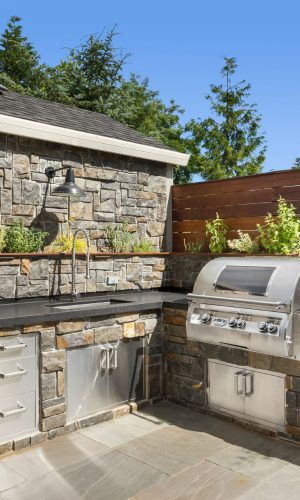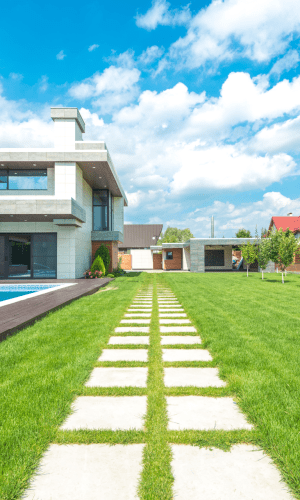Top Notch Retaining Wall Installation Services
Welcome to Top Notch Retaining Wall Installation Services! We are the premier choice for all of your retaining wall installation needs. With a team of experienced and knowledgeable professionals, we guarantee that you will get the best service possible.
Get a Free Quote!
Retaining walls are an essential part of any yard or landscape design. They provide stability by preventing soil movement and erosion, while also helping to define different areas in your outdoor space. Whether you’re looking to add a unique aesthetic touch or just need something to keep your soil in place, a retaining wall can be the perfect solution.
Types Of Walkway Pavers We Install
Retaining walls are an essential part of any yard or landscape design. They provide stability by preventing soil movement and erosion, while also helping to define different areas in your outdoor space. Whether you’re looking to add a unique aesthetic touch or just need something to keep your soil in place, a retaining wall can be the perfect solution.

Benefits Of Installing A Retaining Wall
Retaining walls are a great way to enhance the look of your outdoor space, while also protecting it from soil erosion and water runoff. Not only do they look nice, but there are many practical benefits you can enjoy by installing a retaining wall in your yard. Here are just a few of them:
Stability
Retaining walls provide additional stability and support to the surrounding area, which can be especially beneficial in areas that tend to have shifting soils or erosive factors like strong winds or heavy rains. This makes them especially useful for holding back large amounts of soil on hillsides or sloped properties.
Improved drainage
A properly designed and installed retaining wall can help divert water away from structures such as homes and patios, which helps reduce the risk of flooding and can even improve your landscaping by reducing soil erosion.
Increased space
By installing a retaining wall, you can effectively create more usable space in your outdoor area as it will help to level off a sloped surface and make it easier to use for entertaining or gardening.
Beautification
Retaining walls are attractive additions to any outdoor space and come in a variety of styles and materials, so you can find one that’s perfect for enhancing the look of your property. They also add an element of sophistication with their classic lines and elegant finishes.
Increased Market Value
By adding this feature to your property, you can greatly increase its market value as retaining walls add both aesthetic and practical value. Plus, they’re a great way to show potential buyers that you have taken care of the home and are invested in its upkeep.
Noise Reduction
Retaining walls can help to reduce the amount of noise from outside sources, like traffic or neighbours, that makes its way into your outdoor space. By installing one, you can enjoy a peaceful and serene environment in your yard.
These are just a few of the benefits that come with installing a retaining wall on your property. If you’re looking for an easy way to upgrade your outdoor space, a retaining wall is the perfect solution.
Should I Go For Building A Retaining Wall?
Retaining walls are especially beneficial for homes or businesses located on sloped or hilly surfaces, as they can help to level off the area and provide additional stability and support. They can also be used to improve drainage in areas prone to flooding, so it’s worth considering if your property is at risk of water damage. It’s always best to consult with an experienced landscape designer before committing to any project, so you can be sure that your new retaining wall will fit all of your needs.
Why Choose Green Dog Lawn Care’s Retaining Wall Installation Services?
We strive to provide our customers with the highest quality service available.
Our team of experienced professionals have years of experience installing retaining walls for various applications and understands the importance of properly planning each project for maximum results.
We use only top-quality materials when constructing our retaining walls to ensure durability against any weather conditions as well as long-term structural integrity.
Additionally, we consider all design elements such as height, depth, soil type, drainage patterns and reinforcement needs – making sure that the wall will remain strong against any external pressures it may face over time.
For superior results that last – choose Top Notch Retaining Wall Installation Services.

Secure Your Property From The Devastating Effects of Soil Erosion
Protecting your property from the devastating effects of soil erosion can be done through wall projects. These wall projects will support the land, trapping sediment, and slowing down water runoff, allowing for water retention and healthy plant growth.
In addition to wall projects, other building materials such as terraces, gabion baskets, geotextiles and organic amendments can also help reduce erosion by improving soil structure. Building materials are usually charged by the square foot or square footage so it is important to determine how much of what material you will need depending on your settings of the property which needs protection.
Types of Retaining Walls We Build
Proper retaining wall installation is paramount for increasing soil stability and decreasing erosion. Here at Green Dog, we use retaining wall blocks to construct retaining walls of all shapes and sizes. We begin by removing topsoil from the area where the retaining wall will reside, laying down geotextile fabric and installing a wall block on top of the fabric.
The wall block forms the wall face which can be designed with straight lines, curves or stacked retaining walls depending on your needs and aesthetic desires! In addition, we can also incorporate river rock into certain portions of your retaining wall for extra texture. We always ensure proper drainage as we know that this is key to avoiding water build-up and potential erosion in the future.
Our Steps To Build Retaining Wall Blocks
Installing a retaining wall requires careful preparation and planning – as proper installation techniques are essential for ensuring the structural integrity of the wall over time.
The most important step is determining the right type of wall material based on specific requirements such as soil conditions, height, width, drainage needs, reinforcement considerations etc.,
This will ensure that your wall is capable of providing effective support against external pressures such as water or land-based forces. Once these details have been determined – construction can begin.
Depending on the material used, excavating may be required around the area where the wall will be built before foundations can be laid out using concrete footings or posts installed using anchors into gravel beds (this applies mainly to wood walls).
Materials such as stone or brick require dry-stacking where each layer must be carefully aligned using mortar before filling gaps with gravel and finally moving onto backfilling with soil and finishing off with topsoil or grass seed depending on desired aesthetics.
Building Materials We Use To Install A Retaining Wall
We use various materials to construct retaining walls. Some of the most popular include:
Concrete: This is a versatile and durable material that can be used for any type of wall. It’s usually cost-effective in comparison to other materials and requires little maintenance, making it the go-to choice for many applications.
Stone or brick: These are attractive yet strong options that add a timeless look while also providing stability against external forces. They come in an array of shapes and sizes as well as colors so you can customize your wall however you like.
Wood: Wood is also popular for retaining walls due to its rustic aesthetic appeal, although it does require more maintenance than stone or concrete and is not as durable against harsh weather conditions.
Ultimately, the type of material used to build a retaining wall will be determined by its purpose and size as well as aesthetic preferences. At Top Notch Retaining Wall Installation Services, we use only the best materials available so you can rest assured that your retaining wall will provide strength and stability for years to come.

Frequently Asked Questions
Wall costs will depend on the size and materials used – with some walls costing upwards of $1000 or more. To get an accurate quote for your wall, it’s best to contact a professional who can assess the area and provide you with the most cost-effective solution.
Most retaining walls require little to no maintenance after installation; however, if any repairs are needed due to weathering or settling, then they should be taken care of as soon as possible to avoid further damage. Additionally, some materials may require periodic re-sealing in order to maintain their appearance and strength.
It is possible to build your own retaining wall, although we highly suggest that you contact a professional as retaining walls require skill, experience and expertise to be properly installed. An experienced contractor will not only be able to build your wall correctly but also provide tips on maintenance.
You may need permits to construct a retaining wall depending on the size of the job, local regulations and whether or not the structure is permanent. To find out if you will require one in your particular area, it’s best to contact your local building department for more information.
When building a retaining wall, the trench should be at least 18 inches wide for soils up to medium-textured. For heavier soil textures, such as clay and loam, you might need to have a wider trench, up to 24 inches.
Poured concrete is the most cost-effective type of retaining wall. This type of wall is made by pouring concrete into a form and then allowing it to harden. Poured concrete walls are strong, durable, and easy to install. However, they do require some maintenance and may need to be re-poured every few years depending on your climate.
Stone retaining walls have several advantages, including strength, durability, and aesthetics. Stone walls can also be used to add character and charm to your space and provide a unique look that cannot be found with any other type of retaining wall. Additionally, stone walls require minimal maintenance and last for many years without needing repairs or replacement.
The type of material you choose will depend on the purpose of your wall and your budget. For example, poured concrete is a cost-effective option but may require more maintenance than a brick or stone wall. If you’re looking for something more aesthetically pleasing, brick or stone might be a better choice. If you’re looking for a wall that will stand the test of time, then you may want to consider using treated lumber or steel beams.
